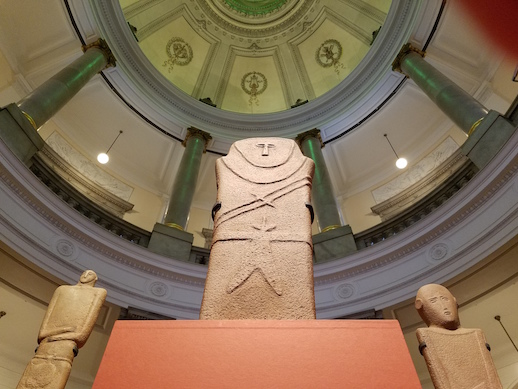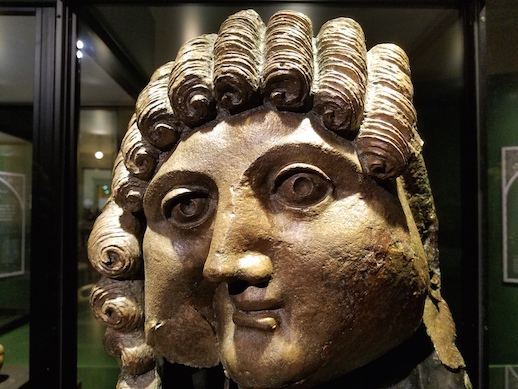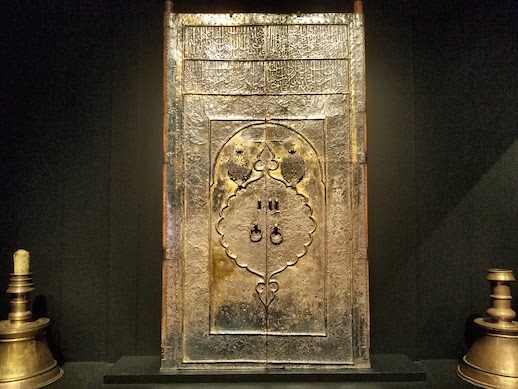Traversing the Roads of Arabia
Roads of Arabia at the Tokyo National Museum presents 466 treasures from the Kingdom of Saudi Arabia dating back over one million years, from the Paleolithic age to 20th Century CE. This is the first time these artworks and artefacts have been shown in Japan.
The Arabian Peninsula has been a centre of trade and culture since the first human civilizations were developing. But it is only in the last 40 years that the true extent of the pre-Islamic history of the area has come to light.
As you enter the spectacular Hyokeikan building of the Tokyo National Museum, you are met by three 5000-year old anthropomorphic stele, setting the tone for the wonders on show. The central stele is about one metre tall. Both sides are sculpted. The gaze is drawn to the double-bladed dagger hanging from a belt that continues around the back. It was found in a village near Ha’il and dates to the 4th millennium B.C.E., one of 60 or so low-relief human sculptures from the 4th millenium B.C.E found in the last 40 years.

The exhibition proper begins with a look at “Early Humans and Roads into Asia”. The Arabia that the early humans found as they ventured out of Africa was green, with fields, lakes and rivers. On display in this section are the oldest stone tools in Asia. At the dawn of the Neolithic period (about 9000 BCE), communities with agriculture and animal husbandry began to develop. Neolithic sites with arrowheads and other tools have been found.
Humanity’s first urban civilizations were established in Mesopotamia (modern-day Iraq) around 2500 BCE. The Arabian Peninsula prospered as an intermediary between Mesopotamia and the Indus Valley, and this history is explored in the aptly named section “Roads Leading to Civilizations”.
Frankincense and myrrh from what are now Yemen and Oman were highly prized. “Incense Roads” looks at the development of inland trade cities as camels came to be used around the end of the 2nd millenium BCE. Southern Arabia became so wealthy that it was referred to as Arabia Felix, or “Happy Arabia”.
The influence and interplay between the cultures is fascinating here, as the Hellenic, Roman, Indian and indigenous cultures mix to create a diverse array of jewelry, sculpture and decorative arts. One notable piece from this period is the Picasso-esque Head of a Man.

Of course, no discussion of the region is complete without looking at the impact of Islam, covered in “Pilgrimage Roads”. The Islamic world spread over Asia, Africa and Europe, dividing into many territories and local states. In this section, you can see the development of Arabic calligraphic styles, several tombstones from the 10th century CE, and perhaps the most spectacular and impressive of the exhibits – a 17th century door from the Kaaba – the building at the centre of Islam’s most sacred mosque, Al-Masjid Al-Haram in Mecca.
The exhibition wraps up with “Roads Leading to the Kingdom”. In the 18th century, the House of Saud began its conquest of the Arabian Peninsula, leading to the present day Kingdom of Saudi Arabia formed in 1932. Artifacts belonging to the first monarch of this modern era, King Abdulaziz, are on display. Altogether, the collected artifacts of “Roads of Arabia” form a fascinating overview of one of the cradles of human civilisation and culture.

Mac Salman
Mac Salman



